Tourists have been coming to Arashiyama for 1000 years, so I absolutely had to have it on my must-do list when we first visited Kyoto. Arashiyama is a western suburb of Kyoto city and offers so many things to do focused on its natural beauty, local food and traditional culture.
During the Heian period, the nobility would take trips to Arashiyama during cherry blossom and autumn leaves season for outdoor tea parties and strolls along the riverbank. Not much has changed, it’s still popular as a weekend retreat today.
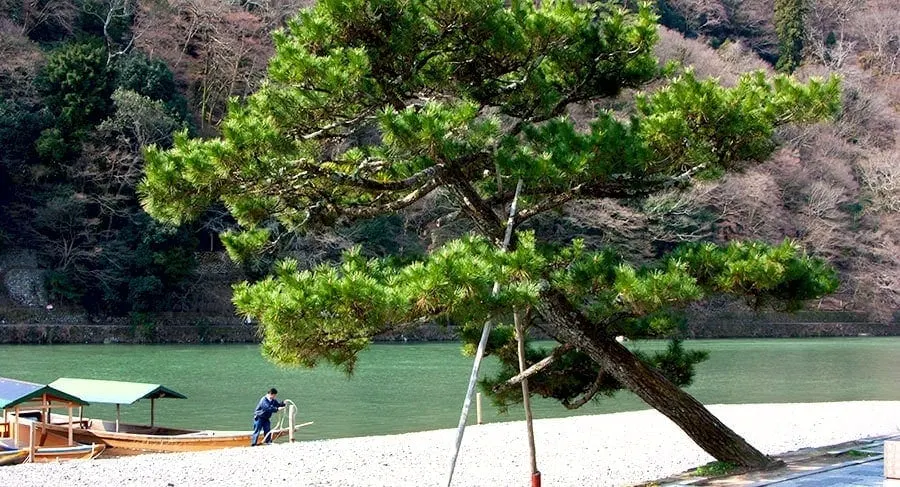
Take the local train from Kyoto station to Saga-Arashiyama, it only takes 10-15 minutes depending on whether you get the rapid or not and will cost Y240 each way.
There’s easily a day of exploring here so let’s take a look at my top 10 fabulous things to see and do in Arashiyama.
Table of Contents
Bamboo Groves
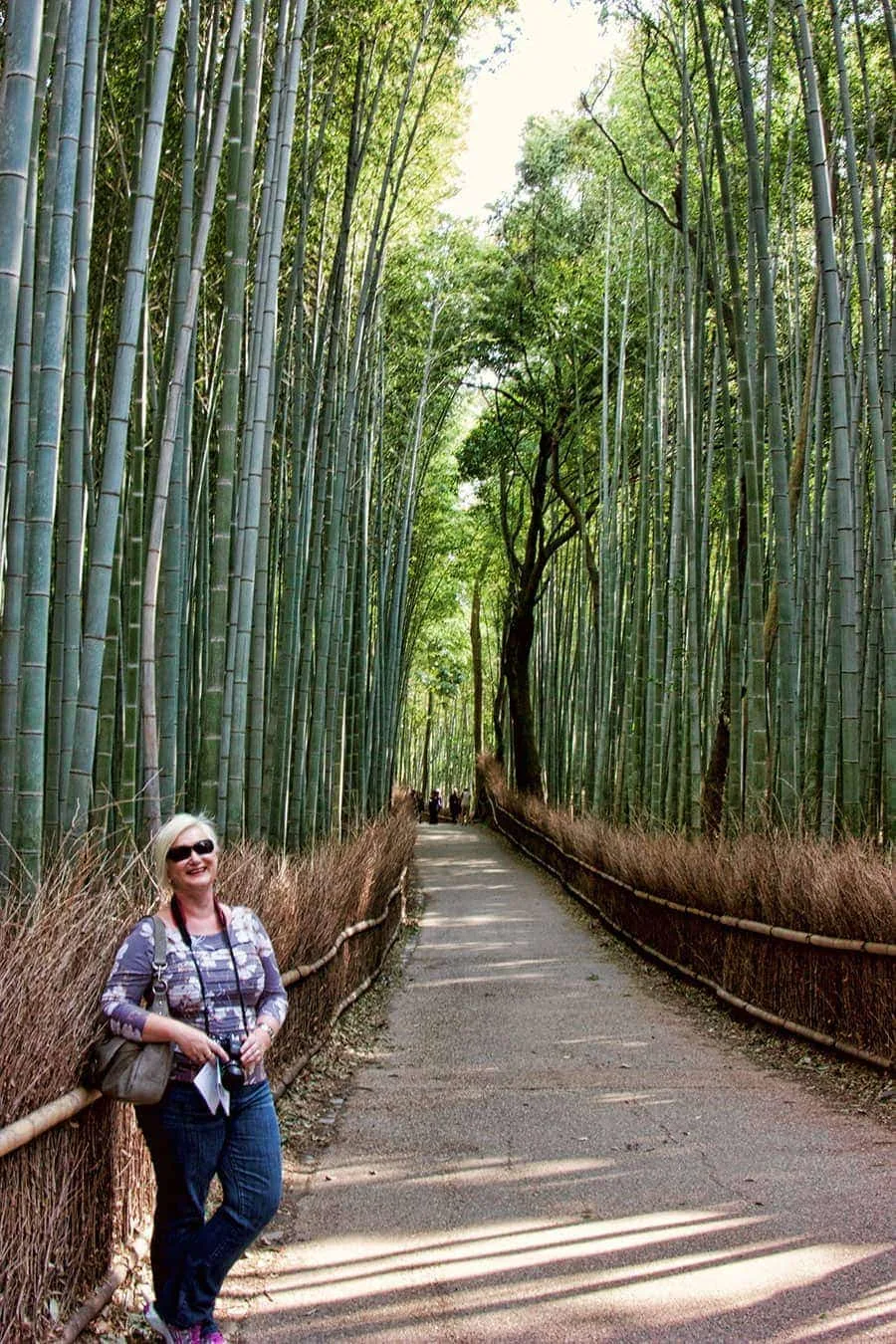
One of the most photographed parts of Arashiyama is the bamboo groves and with good reason. The paths through the bamboo are peaceful and beautiful in the dappled light although much shorter than I had imagined them.
These groves are scattered through Arashiyama but the most well known seems to be the one behind Tenryu-Ji temple.
Oigawa River and Nakanoshima Park
The bridge across the Oigawa River in downtown Arashiyama is another well-photographed spot.
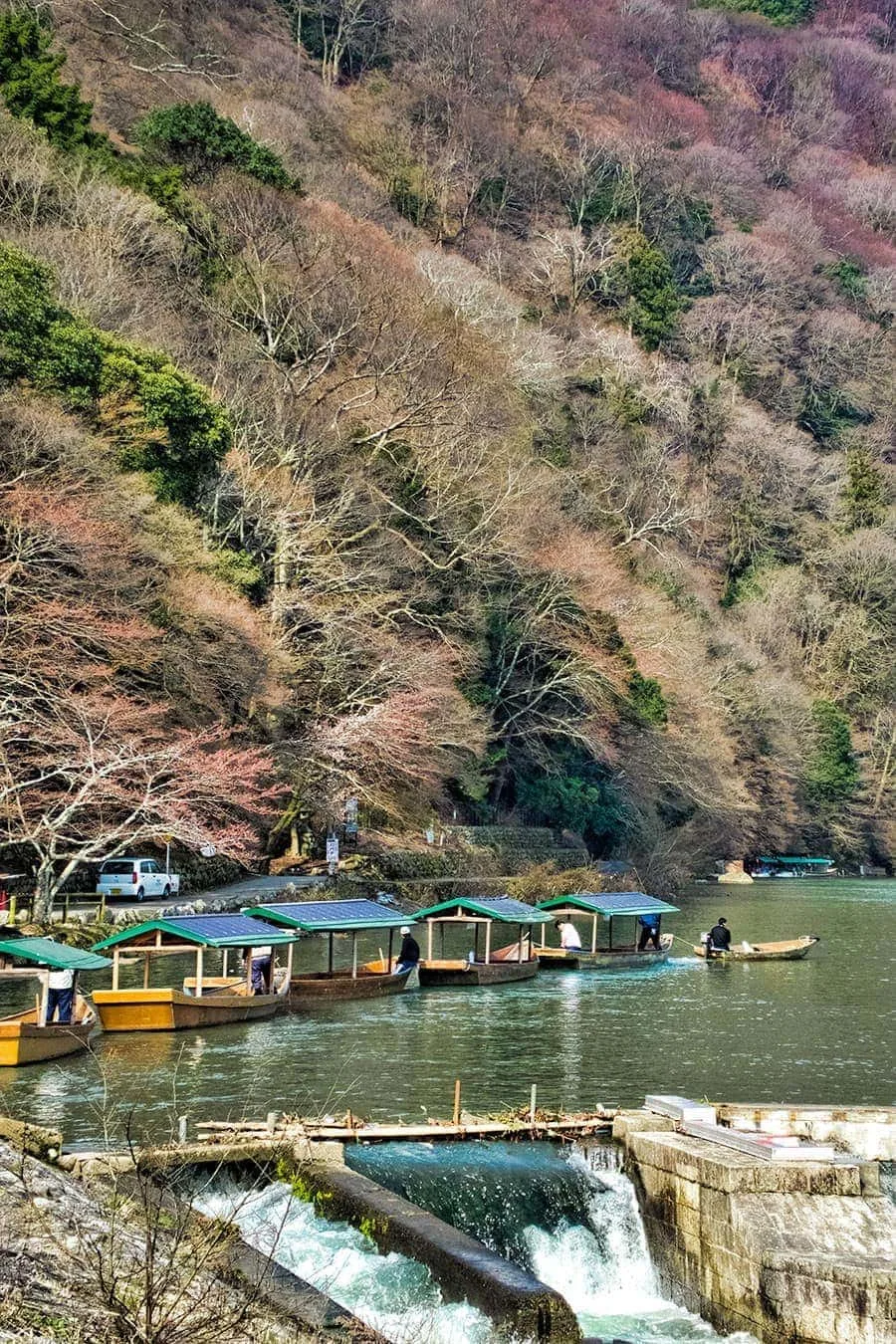
The hillside was pretty with the first buds of the cherry blossom on the hill but it would have been much more spectacular a week or so later. Even if you time your trip perfectly for cherry blossom you can’t be at every spot in peak bloom.
Tenryu-ji Temple
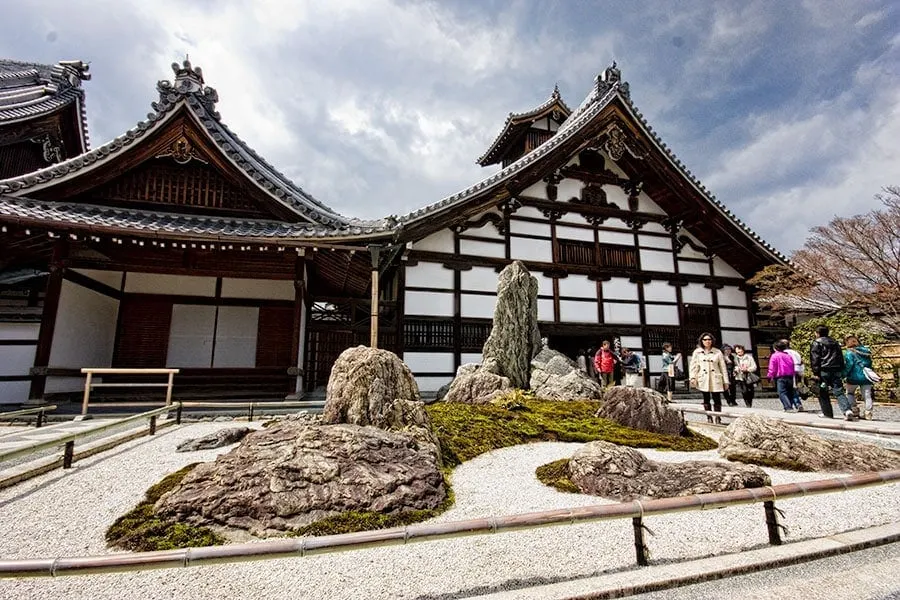
Tenryu-ji Temple was founded in 1339 and is the main temple of the Tenryu-ji branch of the Rinzai school of Buddhism (Zen). The gardens are a major feature of this temple particularly the Sogen Pond with its backdrop of Mount Arashi and Mount Kame. Cherry blossom is also particularly pretty with big crowds gathering under the weeping cherry trees.
Yudofu for lunch
There’s no shortage of great restaurants in Arashiyama but I particularly wanted to try a local specialty of yudofu, or tofu cooked in water. Drew was slightly less enthusiastic but he went along with it. I like tofu anyway but I really enjoyed it with the extra flavours and condiments. The pretty little garden in the traditional Saga-Torimoto street made it extra special. Consider putting it on your ‘try it once’ list.
Adashino Nembutsu-ji Temple
Nembutsu-ji was founded in the 9th century by the monk Kobo Daishi who placed stone statues for the souls of the dead. Today the temple is home to thousands of stone statues. At the back of the temple is a short path leading through another bamboo grove.
Saga-Toriimoto Street
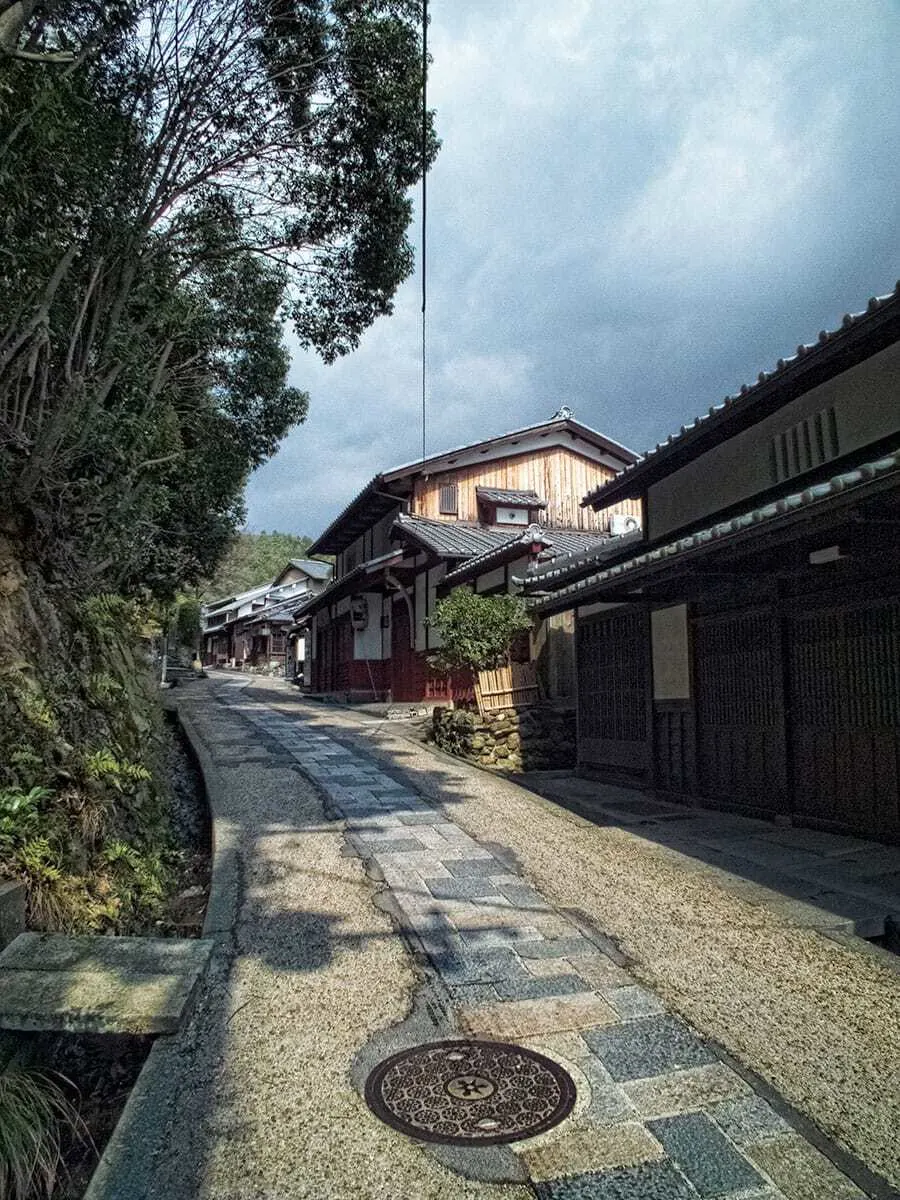
This street is just before you come to the Nembutsu-ji temple and is preserved in the style of the Meiji Period. Many of the traditional Machiya (townhouses) have now been converted to shops and restaurants including the Yudofu speciality restaurant we ate at that day.
Gio-ji Temple
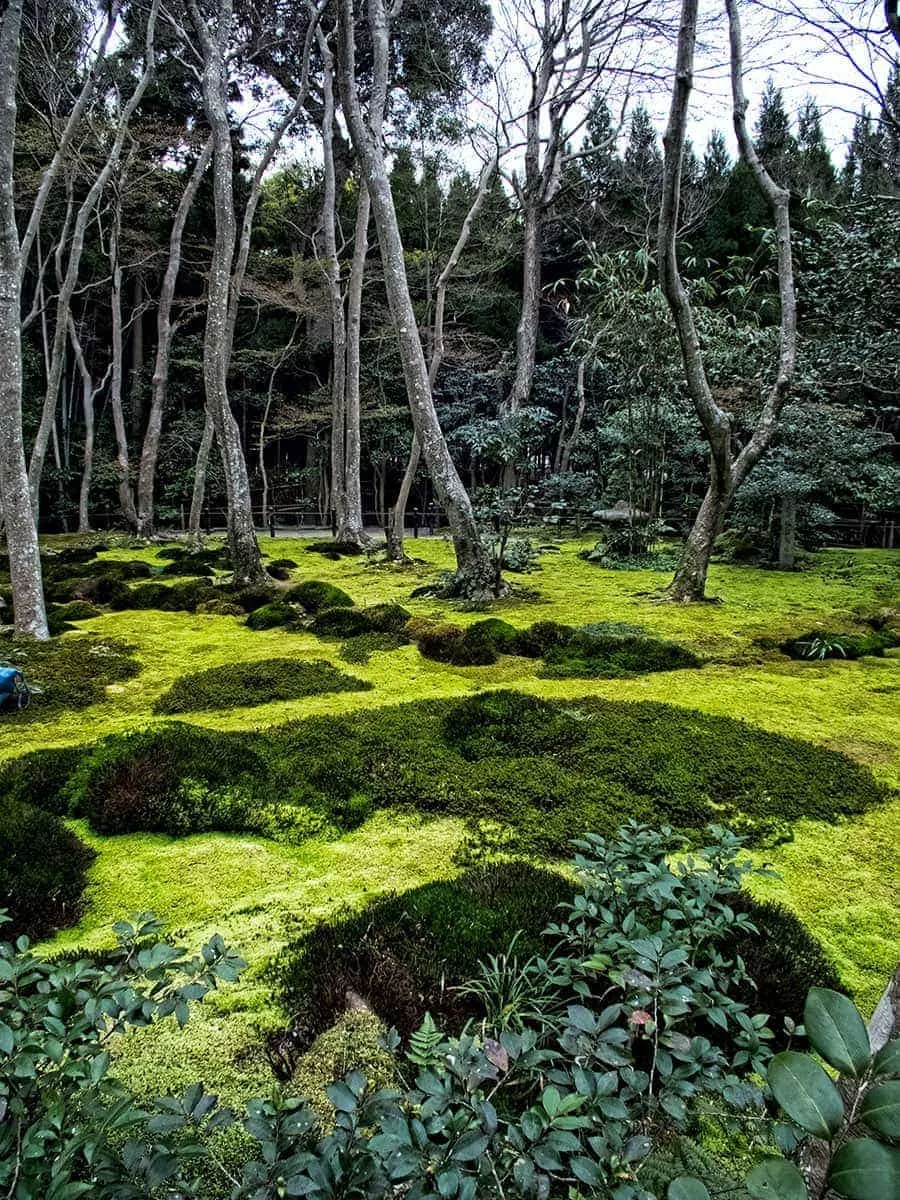
Gio-Ji temple is nestled back into the forest and is best known for its moss garden which is carefully tended to keep it weed-free. There were several ladies hard at work when we visited, presumably monks/nuns by their robes.
The entrance and small main hall have thatched roofs and the hall has a round window with a view back out to the garden.
Take a Ricksha ride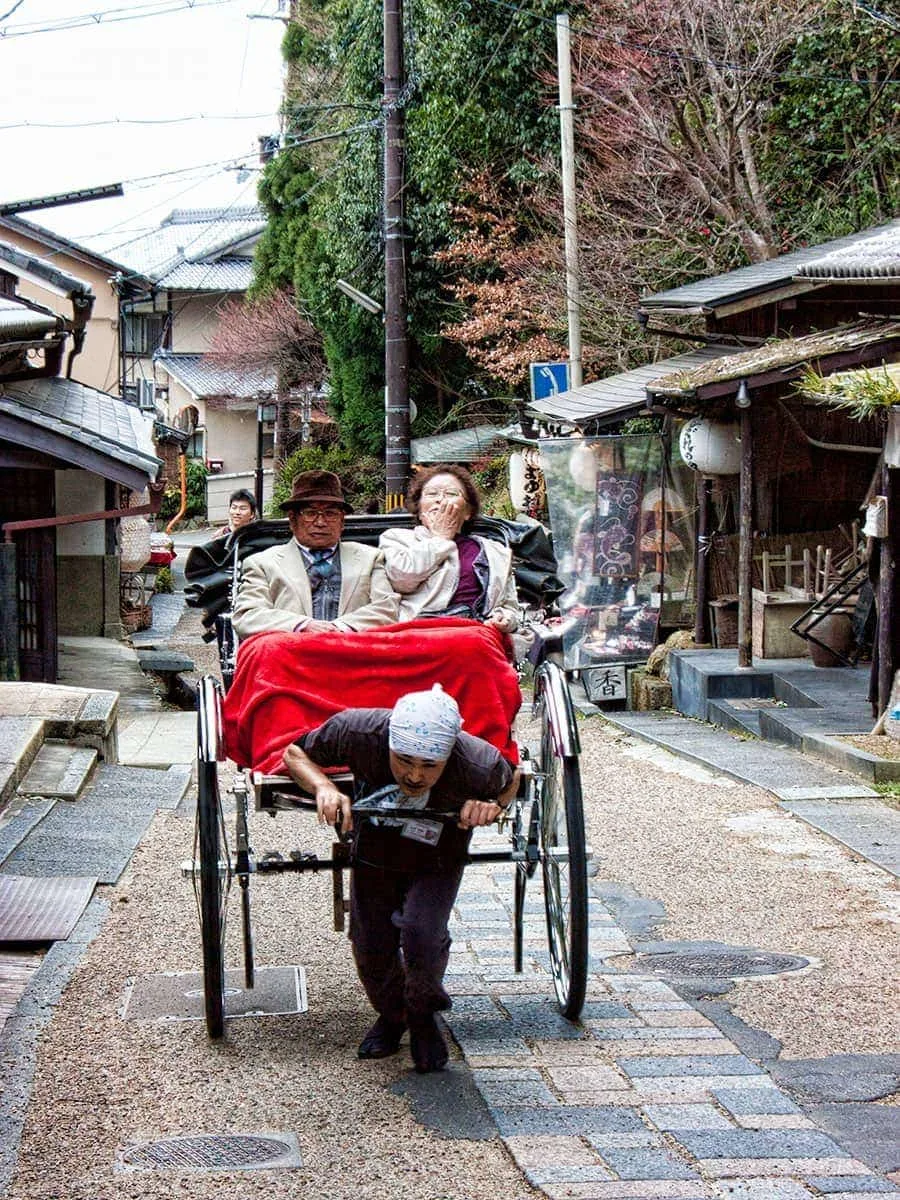
It is perhaps too touristy for most travellers, but traditional Japanese rickshaws appear in many of the tourist areas. Young fit men pull them through the narrow streets but perhaps there is a reason why almost every other country has banned human pulled rickshaws in favour of motorised or pedal-powered. This guy certainly earned his pay that day pulling it up the hill, and they don’t even get a tip in Japan.
Jojakko-ji Temple
Jojakko-Ji temple is set on the mountainside and was founded in 1596. Steep stairs lead up the hillside and through the Niomon gate. From the top, there are great views over Kyoto and the moss and maple trees make it very pretty. It rained a little while we were walking through making the fresh bold green of the moss really shine.
Sakura or Koyo Season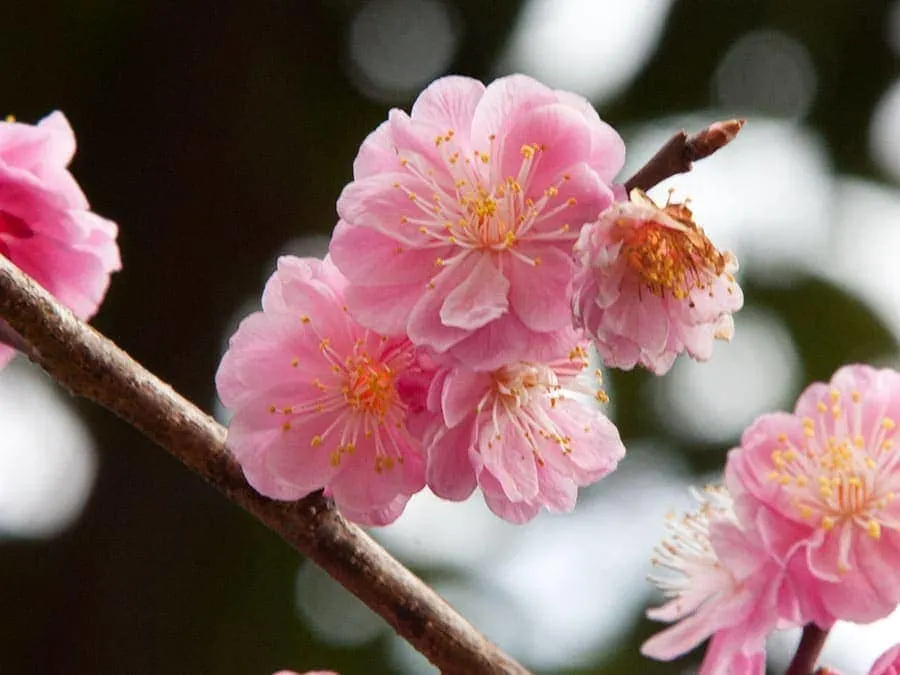
The spring cherry blossom (sakura) or autumn leaves (Koyo) season is a great time to go to Arashiyama. Not only are the public gardens, temples and private homes filled with blossoms and coloured leaves but so are the surrounding hillsides. The trees are lit up along the riverbank in the evenings to encourage people to walk along and enjoy the short seasonal display.
If you’ve been to Arashiyama what did you enjoy most about it? If not what attracts you most to a destination when travelling? What sort of activities or locations do you enjoy?
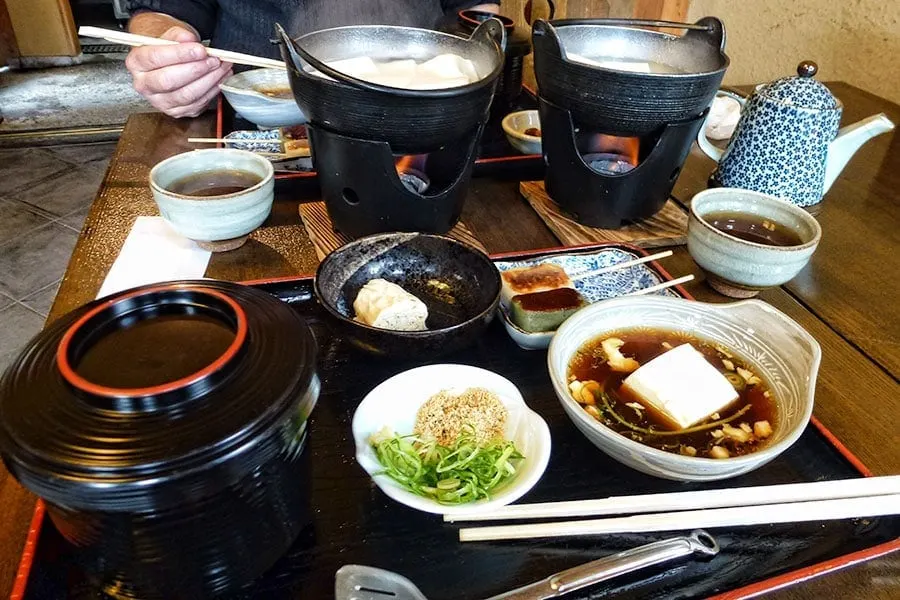
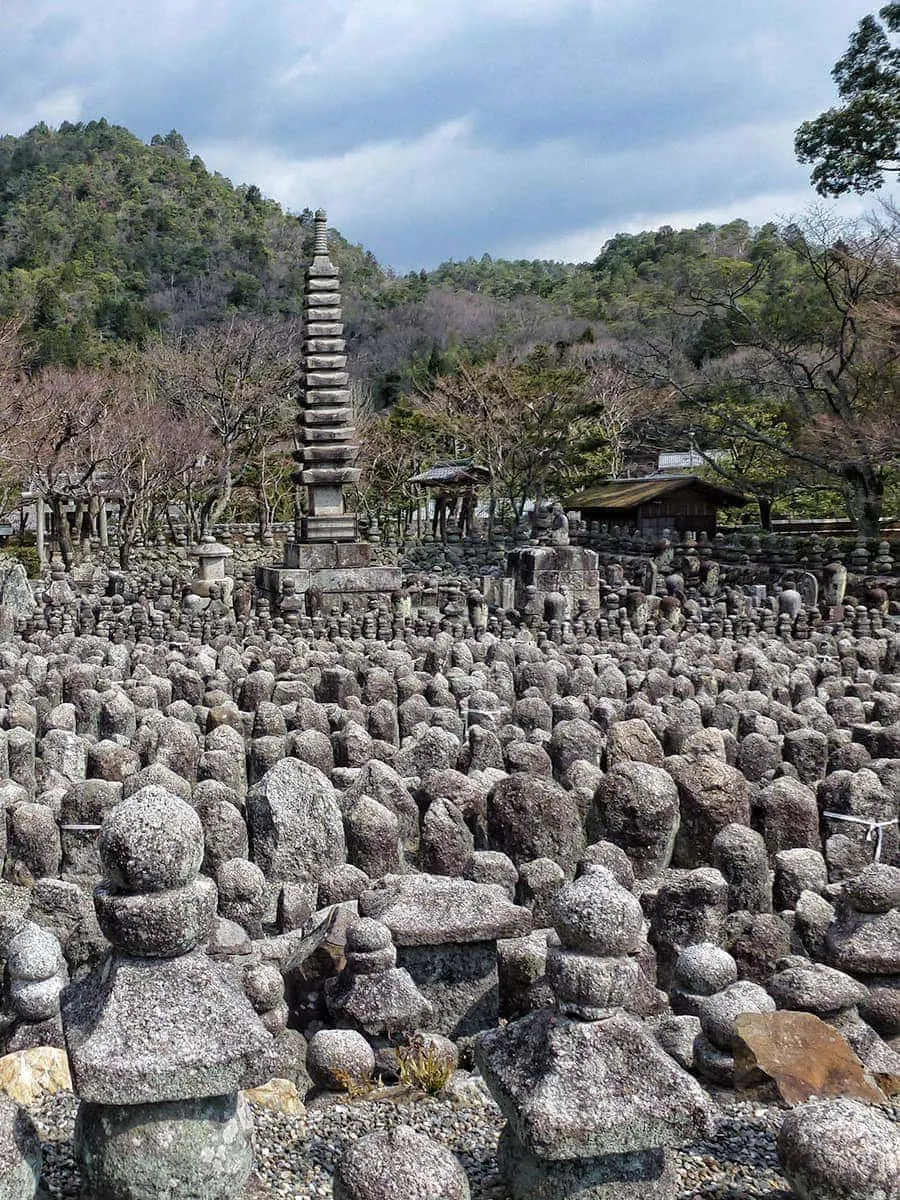
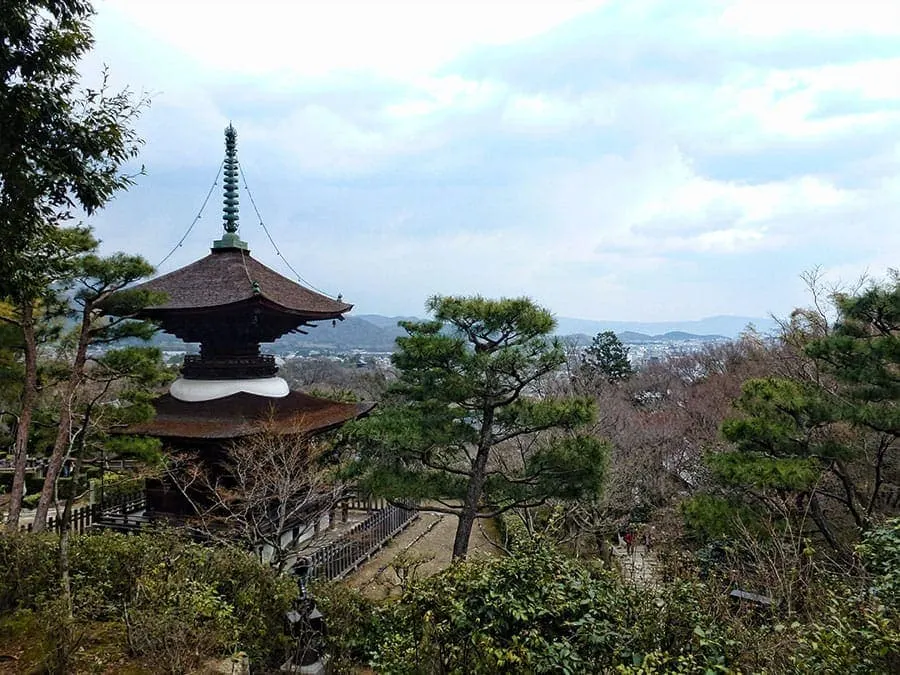
Caroline Richardson
Friday 14th of February 2020
Do you recommend tour or doing your own thing?
Toni Broome
Saturday 15th of February 2020
Hi Caroline, we would do Arashiyama on our own especially if staying in Kyoto. It is easy to get to and there is so much to see and do depending on your interests, how much time you have to spend and how far you are prepared to walk. If time or walking is limited you can take a taxi to the further out place you want to see then work your way back on foot. I would recommend a tour if time is very limited, if you don't really enjoy the process of researching and planning your trip or if you want a deeper understanding like the food culture or the history because the few tours we've done in Japan have done that very well. The downside of a tour is most go to the most popular and therefore busy places, you will likely want to see the Bamboo forest and Tenryuji, they are popular for a reason but on your own itinerary, you can plan to go to busy places early or late in the day and spend time in others too. We have been to the small bamboo forest behind Tenryuji that you will see in many photos and it is lovely but there are others in Arashiyama where we were the only people there that we discovered walking around and that solitude made them very special too.
Jo Wallwork
Friday 11th of October 2019
We are off to Japan next week and your info is the best i have come across i.e. that is because we are Aussies. I am busily jotting down what to see at all the places you mention and am so looking forward to it. It is set out easy to understand and also notes on how to get to the places and what stations to get off from Thank you so much for all the details it makes planning my trip a lot easier. I write down places to visit in a book and take that with me. Then look at what to do each day and where to go . thanks again
Toni Broome
Sunday 13th of October 2019
Thanks Jo, it's lovely to hear we've been able to provide something useful for other visitors. Have a fabulous time over there!
Bryn StClair
Thursday 20th of September 2018
I'm sure the costs are as varied as the places you visit, but can you give me an idea of a typical entrance fee price as I begin to budget for a trip to visit these places in Japan?
Toni Broome
Sunday 23rd of September 2018
Hi Bryn, yes it does vary a bit, Shinto Shrines are generally free to enter, even the large ones such as Fushimi Inari in Kyoto. Buddhist Temples that are open to visit will often but not always have a fee and it can vary from Y300 to Y1000. It's usually around Y400 or Y500. The fee is charged in different ways, sometimes at the entry gate (the Golden Pavilion and Ryoanji for example) while at others it's charged for entry to a particular temple building such as the main hall at Kiyomizudera others might charge for entry to an inner garden area such as at Heian Shrine.
Ella Lopatin
Saturday 14th of July 2018
I am enjoying your blogs. It’s pretty detailed. Thank you for sharing. I will definitely use this on my October trip to Kyoto.
Toni Broome
Monday 16th of July 2018
Thanks for the feedback Ella, have a fabulous trip.
Krystal
Sunday 18th of January 2015
Fun article! I really liked the layout of it. When I was an exchange student in Kyoto, Arashiyama was one of my favorite places to spend my free time. Man, I miss walking through the bamboo or enjoying fireworks and chu-hi by the river. Now I'm going to have to go back, thanks :)
twoaussietravellers@yahoo.com
Sunday 18th of January 2015
Hi Krystal, Thanks for visiting the site. Visiting Kyoto as an exchange student must have been a fabulous experience and I could easily spend a whole lot of free time in Arashiyama. I thought we might try hiring cycles next time we are there and get to some of the temples even further out.